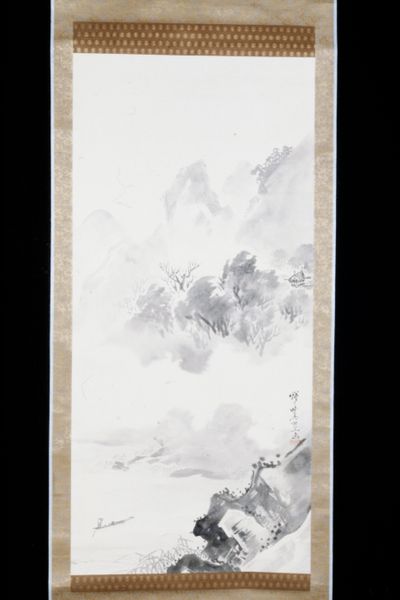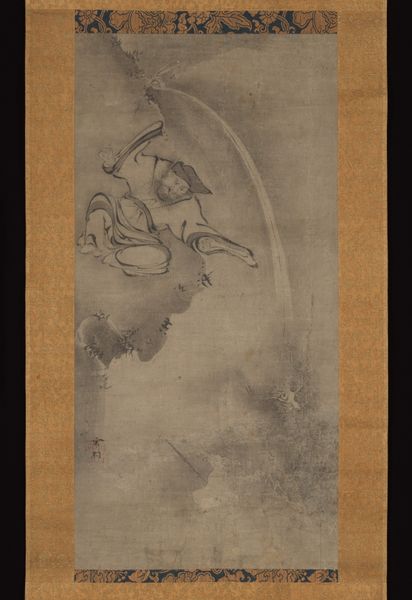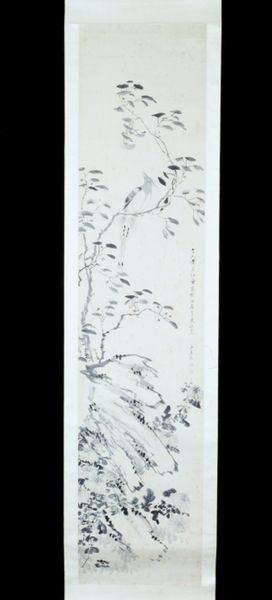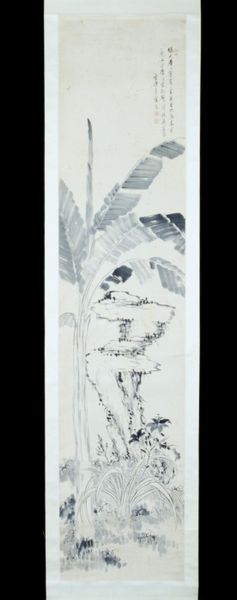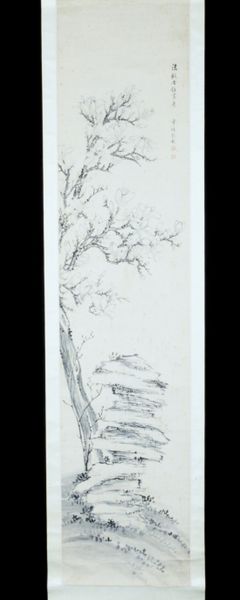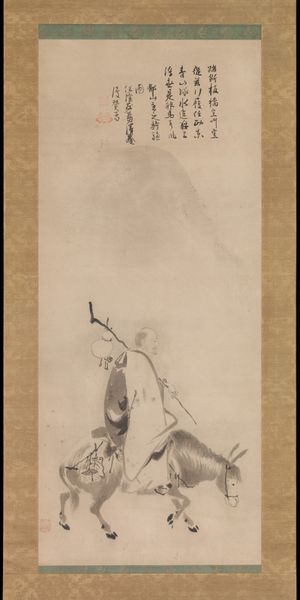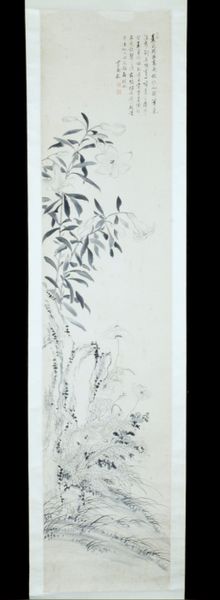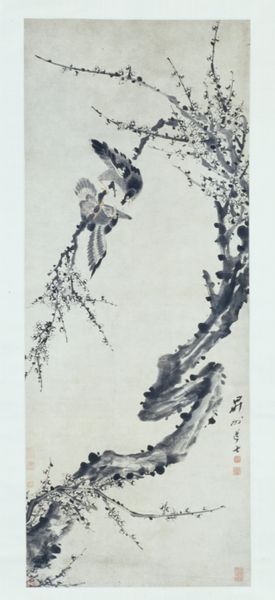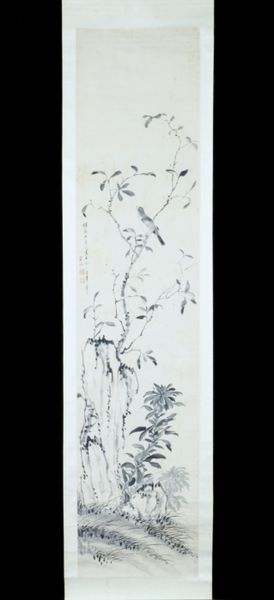![Boy with Water Buffalo [left of a pair] by Hanabusa Itchō](/_next/image?url=https%3A%2F%2Fd2w8kbdekdi1gv.cloudfront.net%2FeyJidWNrZXQiOiAiYXJ0ZXJhLWltYWdlcy1idWNrZXQiLCAia2V5IjogImFydHdvcmtzL2FlMDRkNjVjLWM4ZWQtNGJjYi1hZDE2LTVmM2VmZjA3NzRkYS9hZTA0ZDY1Yy1jOGVkLTRiY2ItYWQxNi01ZjNlZmYwNzc0ZGFfZnVsbC5qcGciLCAiZWRpdHMiOiB7InJlc2l6ZSI6IHsid2lkdGgiOiAxOTIwLCAiaGVpZ2h0IjogMTkyMCwgImZpdCI6ICJpbnNpZGUifX19&w=3840&q=75)
Boy with Water Buffalo [left of a pair] late 17th - early 18th century
0:00
0:00
ink-on-paper
#
beige
#
toned paper
#
earth tone
#
light earthy tone
#
japan
#
ink-on-paper
#
brown and beige
#
earthy tone
#
neutral brown palette
#
brown colour palette
#
columned text
#
statue
Dimensions: 40 3/4 x 15 in. (103.51 x 38.1 cm) (painting)
Copyright: Public Domain
Curator: I find this ink-on-paper piece rather intriguing; its neutral brown palette establishes such a subdued atmosphere. It's one half of a pair titled "Boy with Water Buffalo," dating from the late 17th to early 18th century and attributed to Hanabusa Itchō. Editor: Immediately, I'm struck by the artist's masterful use of empty space, what a minimalistic arrangement and monochromatic tonality; it brings to mind an otherworldly scene. Curator: Indeed. The economy of line in Itchō’s brushwork is especially striking. Note the slender, arching lines defining the buffalo’s form versus the dark, pooling ink representing the boy amidst the stylized weeping willow tree. Do you see how the calligraphic marks become integral to the composition’s meaning? Editor: Precisely. There's a rhythmic relationship between the animal and human presence. We might wonder, given the period, if there are specific connotations. The young figure seems almost an extension of the landscape itself; its role might hint at notions of innocence and the human relationship with nature and agricultural life. Curator: Absolutely. This aesthetic connects deeply to the philosophical principles pervasive during this time period in Japan and elsewhere, the integration and unity of being within a natural sphere, an attempt at portraying these themes with ink on toned paper. Editor: Considering the cultural context further, agricultural stability was a foundation for Japanese social structure. These types of images may offer valuable visual texts in exploring rural narratives. Curator: We shouldn't disregard the intrinsic value of Itchō's technique; The varied ink tones contribute substantially to its dynamic range, lending an air of timelessness to the image's composition. This visual experience transcends the explicit social commentary. Editor: And maybe there isn't a right reading? This piece demonstrates how history and form, together, produce an interpretative ambiguity, a powerful sense of wonder. Curator: I concur. Delving into both formal structure and historical grounding enables a fuller appreciation of pieces like this one. Editor: I am happy for our discussion today to provide, I hope, an insightful approach for viewing this type of fine, timeless creation.
Comments
No comments
Be the first to comment and join the conversation on the ultimate creative platform.
